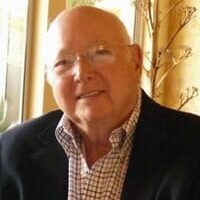Bio
A true pioneer in audiology, Dr. Earl Harford’s efforts have helped shape the profession for the past 60 years. Dr. Harford is well known for his academic career that began at McGill University and then continued at Northwestern University where he originally served as a graduate assistant to Dr. James Jerger. Harford returned there in 1959 as a colleague. During his 17 years on the faculty, he taught, mentored, and published with Drs. Carhart and Jerger, Bill Rintelmann, Fred Bess, Joe Barry, Richard Wilson and many other historic and current leaders in the profession.
From Northwestern, Dr. Harford moved to Vanderbilt University where he became the director of the Wilkerson Center. After two years there, he was invited to join the staff of the University of Minnesota Medical School where he was the first audiologist in the state to openly dispense hearing aids.
His ingenuity prompted the evolution of the CROS and BICROS hearing aids. At the time of that invention, it was believed that persons with one normal ear had normal hearing. Dr. Harford was working with Dr. George Shambaugh who encouraged him to explore the idea of developing a hearing system to assist patients with unilateral hearing loss.
Dr. Harford was among the earliest researchers to introduce tympanometry, acoustic reflex measurements, and real-ear measurement in the United States. In fact, Dr. Harford has been referred to by his colleagues as the “father of real ear measurements.”
Following six years operating his own private practice, Dr. Harford joined Starkey Laboratories as Director of University Services. During his tenure at Starkey, he worked with Dave Preves on microphone technology for in situ measurements of the ear, where they completed over 8000 measurements in the early 1980s. This clinical experience proved that real-ear measurements had the potential to verify the performance of the relatively new ITE hearing aids being introduced at that time. This work led to the commercial development and introduction of real-ear measurements in the United States. While employed at Starkey, Dr. Harford originated and directed the Audiology Internship Program where more than 150 audiologists, many of whom became leaders in the profession, completed the program.
A prolific publisher and skillful teacher, Dr. Harford was one of the early advocates of the AuD degree. He delivered the Carhart Lecture at the combined meeting of the American Auditory Society and the American Academy of Audiology in 1993. It was there that he provided a rationale for an independent profession including the foundation for changing the existing model of master’s education to becoming a doctoring and autonomous profession.
Dr. Harford’s contributions to the profession and clinical research are well known and remain the foundation of many current clinical practices. He remains active today teaching classes on hearing loss in his retirement community; he continues to serve as a resource for Starkey Laboratories and Starkey Hearing Foundation; and, he serves as a member of the Board of Directors of the National Council for Better Hearing. Dr. Harford currently lives in Colorado with his audiologist wife, Jennifer.
